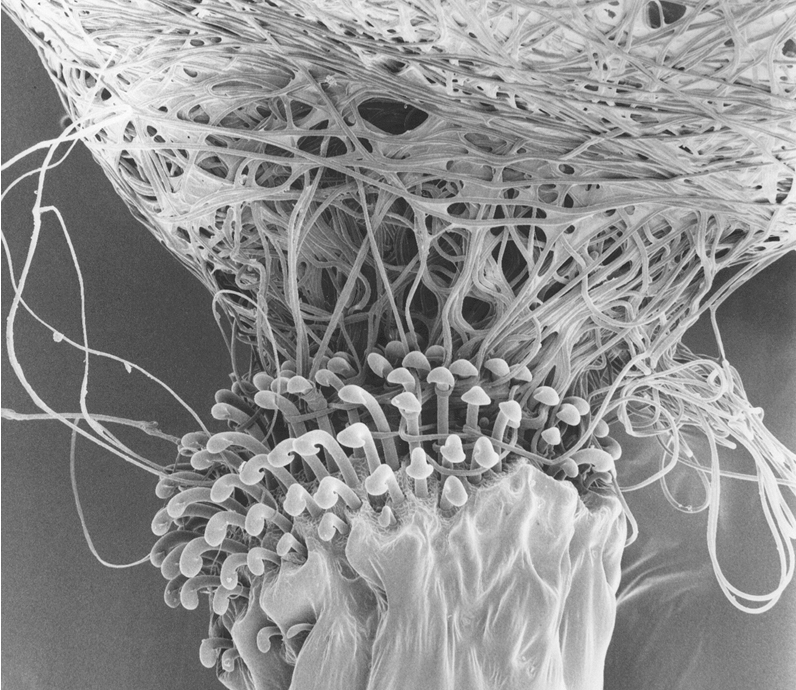1. Explore the Mystery Photos
Show students the first photo in the slideshow.
a. Name the Objects
Encorage students to invent names to describe the objects they see.
After they brainstorm their lisst, have students identify the nouns (objects). Example (with nouns in bold):
- mushroom-topped tubular stalks
- spaghetti-like ribbons
- honey-comb, bubble-wrap base
b. Write a Descriptive Paragraph
Next have students use their brainstormed words to write a decriptive paragraph about what might be happening in the photo. Example:
- Mushroom-topped tubular stalks are tangled up in the spaghetti-like ribbons.
Show students Mystery Photo #2. What new objects and details does this photo reveal? Have students add to their descriptive paragraph.
2. View Slideshow
After inventing words and descriptions, read through the slideshow together. The slideshow reveals the identity and scientific terms for the small and intricate structures shown in the magnified images—the silk pad, crochets and cremaster.
3. View Video Clip
The video clip of metamorphosis shows when the silk pad, crochets and cremaster are used. Watch the video clip and ask:
- Why does the monarch twist and turn so vigorously as the chrysalis forms? (The twist and turn movement embeds the crochet-topped cremaster into the silk pad.)
- How does this behavior help the monarch survive? (The cremaster safely suspends the chrysalis during the two weeks it will take the monarch to develop into an adult butterfly.)
4. Discuss Adaptations
These magnified photos and video showcase important examples of physical and behavioral adaptations of the monarch butterfly. Have students categorize the adaptations by asking,
- Which are physical adaptations? (the shape and structure of the silk pad, crochets and cremaster)
- Which are behavioral adaptations? (forming silk pad, twisting and turning, hanging upside down, etc.)
5. Summarize and Reflect on Form and Function
Use the Journal Page to revisit the Essential Question:
- What do these unique features reveal about the relationship between form and function?
6. Related Links for Further Exploration
|







